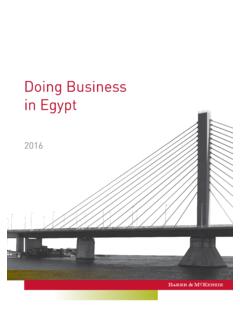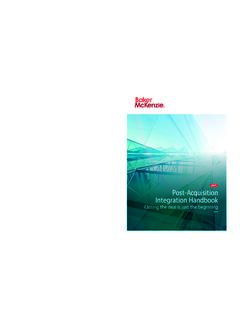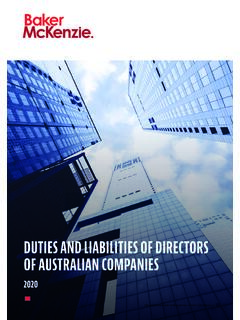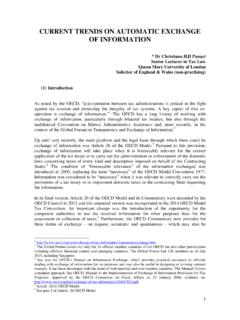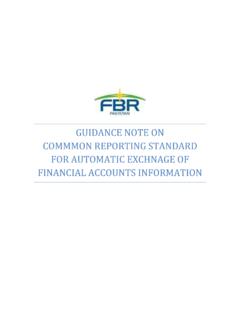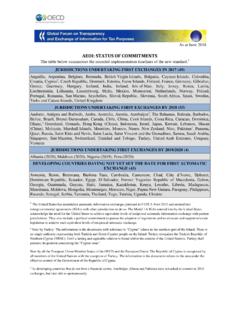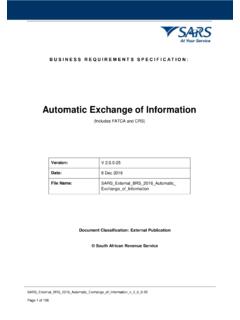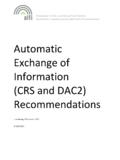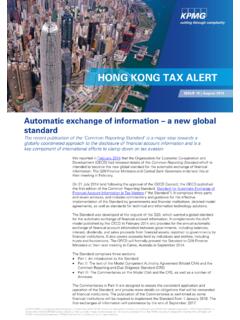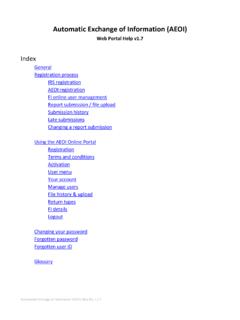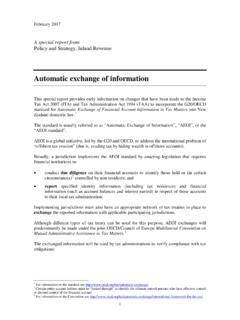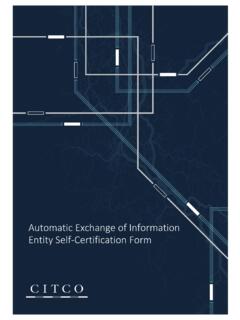Transcription of Automatic Information Exchange with Russia: Conditions …
1 Checkpoint ContentsInternational Tax LibraryWG&L JournalsJournal of International Taxation (WG&L)Journal of International Taxation2017 Volume 28, Number 10, October 2017 ColumnsAutomatic Information Exchange with russia : Conditions and Implications, Journalof International Taxation, Oct 2017 Dateline-RussiaAutomatic Information Exchange with russia : Conditionsand ImplicationsAuthor: KIRILL VIKULOVK irill Vikulov, PhD, is a Senior Associate with Baker & McKenzie, Moscow, Tax of Baker & McKenzie are frequent contributors to the "deoffshoring" of the economy and bringing holdings of businesses from various offshores back toRussia has become the most important tax trend. Experts continue to argue about the core objectives ofthis process: "a campaign against offshore companies," "increase of budget revenues by raisingadditional tax income," "repatriation of assets to russia ," and so on.
2 It is obvious that "deoffshoring"covers a range of state goals and developments of various laws ( , tax, currency control andanti-money laundering regulations, government procurement). As various ministries generally work onlaws within their authority and do not always pursue the same goals, "deoffshoring" may have multipledirections. This multidimensional model is yet to be embedded into the current economic being radically different and more complex, many "deoffshoring" measures were copied fromtheir foreign equivalents and incorporated into the Russian legislation within a very short revolutionary nature is explained as an attempt to understand and, in certain cases, affect legalrelations existing outside the Russian territory where the Russian authorities have limited or no foreign company (CFC) rules are a good example of such "ex-territoriality.
3 " Thus, the majorchallenges for Russian tax authorities will be receiving Information on foreign income (profits) and assetsof Russian persons and a correct interpretation of this data for tax audit Experience in Receiving Information From AbroadThe main sources of Information on foreign income and assets are currently (1) from taxpayersthemselves ( , in tax returns, reports on opening foreign bank accounts and turnover balances) andsome publicly available Information ; (2) from tax audits of Russian subsidiaries and counterparties; and(3) results of Information Exchange under tax treaties. The latter Information flow has increaseddrastically over the past few years. A fair share of the 5,000 Information requests that the RussianFederal Tax Service sends every year is used against taxpayers in , Exchange of Information on request is a sort of manual command not capable of covering vastnumbers of Russian businesses and their foreign assets.
4 Hence, the Russian tax authorities have highhopes for the Multilateral Competent Authority Agreement on the Automatic Exchange of FinancialAccount Information (AEoI), signed on May 12, 2016, and for the country-by-country reporting fortransfer pricing purposes (CbCR). Since the CbCR will apply only to major multinationals, many Russiantaxpayers are concerned mostly about the AEoI. The AEoI is based on the Common Reporting Standard(CRS) that should allow tax authorities (including Russian tax authorities) to receive informationautomatically on foreign financial accounts directly or indirectly (through intermediary companies) heldby individuals who are Russian tax than 100 states, including many offshore, have either activated or committed to activate theautomatic Exchange of financial Information .
5 The list of participating jurisdictions includes EU memberswhere major banks and financial institutions used by Russian businesses keep their assets ( ,Switzerland, Germany and Austria). russia has committed for the first Information Exchange by draft legislation has been published recently and is being discussed currently. However, theCRS Information may not flow immediately. russia will need to agree on the mutual application of theCRS with each participating country and, at this point, certain difficulties may of the AEoIA wide range of "Financial Institutions," including banks and brokers, as well as "Investment Entities"(this category may include ordinary private offshore companies and increasingly popular private trustsand foundations if they are managed by an Investment Entity and are investing in securities and otherfinancial assets) are required to collect and provide automatically (without requests) Information on the"Financial Accounts" to their local authorities.
6 Sheltering behind a company or a trust is no longerpossible due to the look-through effect of the new rules: disclosure occurs up to the individual-thebeneficial owner of the Financial Account or the controlling person of a company or a trust with suchaccount ("Reportable Persons").CRS is known primarily for disclosing Information on bank accounts, which is only partially correct sincethe disclosure covers a broad range of "Financial Accounts." Apart from bank and broker accounts, thisgroup includes nominee accounts ( , depositary accounts) as well as shares or participation interestin Investments Entities (including private companies managed by professional corporate administrators, , private offshore companies with discretionary accounts in foreign investment banks) and debtinterest, which is sensitive Information that individuals prefer not to share with anyone.
7 Thus, the AEoIcovers practically all types of foreign financial application of the CRS to individual accounts is quite clear. They have been subject to disclosure byRussian individuals for a long time. Income from personal individual accounts (deposits) is includeddirectly in individual tax returns. Turnover reports on these accounts have been introduced recently. Theautomatic disclosure of Information on foreign bank accounts may allow the Russian authorities toprosecute individuals who have overestimated bank secrecy or forgotten to pay Russian taxes on foreignsource income. In addition, there is no guarantee that only tax liability (20%-40% penalty plus latepayment interest) will apply. Russian currency control laws operations penalize several transactions notnormally restricted in the EU, , receiving income from securities trading directly via individual foreignbank accounts and not via local (Russian) banks.
8 Nothing in the Russian laws would currently precludeusing the CRS data to impose severe penalties up to 100% of the amount of such illegal , for a long time now, a significant part of the investments and commercial activities of Russianbusinessmen has been held or orchestrated through foreign companies rather than directly. The use ofentities limits commercial risks to the investment amounts and gives access to more flexible andpredictable foreign law and foreign courts ensuring asset protection. Besides, the use of foreigncompanies allows for maintaining a high level of confidentiality for holding assets, which is often crucialfor businesses to reduce hostile takeovers, corruption, and other risks still existing in russia . The AEoIwill decrease confidentiality substantially.
9 Disclosure will cover Russian individuals-"controlling persons"that hold directly or indirectly the majority vote or determine the decisions of foreign companies'executive bodies ( , ultimate beneficial owners (UBOs) for know-your-customer (KYC) purposes). Information covered by the AEoI will not be limited to the personal Information on the owners of FinancialAccounts or controlling persons of foreign companies ( , names, addresses, dates of birth and taxIDs). Account balance, income, or the value of financial assets (including value of shares in privatecompanies consolidating financial assets) at year-end will also be disclosed as part of this "turning outpockets" process. This Information may be compared with assets and income reported in russia .
10 TheRussian tax authorities announced explicitly that they plan to run these Automatic comparisons. This islikely to lead to tax audits for individuals, resulting in heavy tax banks and other financial institutions have already started verifying Information on their Russian clients received requests to confirm disclosure of Information on holding foreigncompanies/CFCs or requests regarding whether their current holding structures meet local tax and other financial institutions serving millions of clients will be forced to maximize the automaticcollection and processing of Information , and are unlikely to consider specific features in non-typicalsituations resulting in identifying several clients/controlling persons and imputing the whole amount ofincome or assets of a foreign passive company (structure)


